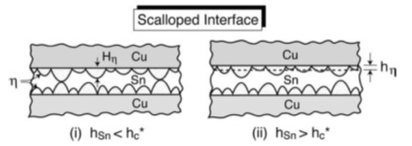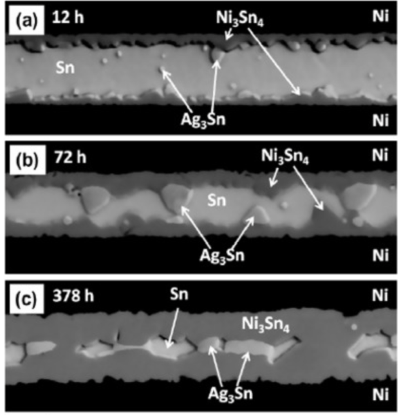Causes and mitigation measures of voids during soldering_Shenzhen Fitech

Causes and mitigation measures of voids during soldering_Shenzhen Fitech
Transient liquid phase (TLP) bonding is a common bonding technique in high-temperature electronic devices, especially in power device packaging. TLP bonding can be carried out at lower temperatures and can remain stable at higher temperatures. TLP bonding uses low melting point metals as intermediate layers and combines them with high melting point metals on the substrates. However, TLP bonding is significantly affected by voids, which can lead to a decrease in the heat transfer efficiency and mechanical strength of the solder joints. Hence, void formation is one of the key concerns in TLP bonding.
1. Causes of voids
1.1 Volume shrinkage
The common cause of voids formation in TLP systems is volume shrinkage. When IMCs begin to form inside the solder joints, due to the different structure and quantity density between IMCs and the original solder metal, under equilibrium conditions, the volume of IMCs will be smaller than the total volume of the initial reacting elements. Since the shrinkage of IMC volume and the reduction of solder joint thickness, tensile stress accumulates inside the solder joint, and the release of stress often produces voids.
1.2 Insufficient liquid phase for IMC formation
Insufficient liquid to form IMCs during TLP bonding can lead to the formation of voids in solder joints. As shown in Figure 1, when the thickness of the Sn layer is slightly greater than η-Cu6Sn5, the remaining Sn melts when heating, but the subsequent reaction with Cu is affected by η-phase grains. The reaction between Sn and Cu in the confined area leads to the consumption of the solder matrix and the formation of voids.

Figure 1. IMC growth of Sn-Cu system.
1.3 Kirkendall voids
The different interdiffusion rates within IMCs at the interface between solder and pads result in the consumption of solder in some areas, resulting in the formation of Kirkendall voids. Typically, the formation of Kirkendall voids in TLP solder joints is caused by the unbalanced diffusion of different metal components at the solder/substrate interface. The formation of Kirkendall voids generally occurs in Sn-Cu TLP systems, as Cu diffuses outward at a faster rate, leaving voids in the Cu3Sn IMC layer.
2. Actions to reduce voids
2.1 Introducing a buffer layer
Introducing a metal layer between the reaction layers in the TLP system can form an additional IMC, which can compensate for the consumed low-temperature liquid. For example, to prevent the formation of voids in Ni3Sn4 IMCs, Sn2.4Ag can be used instead of pure Sn. As the aging time increases, a large amount of Ag3Sn appears between the Ni3Sn4 layers, and no voids are found.

Figure 2. Evolution of Ni/Sn2.4Ag/Ni solder joints when aging at 180℃. (a)12h; (b)72h; (c)378h.
2.2 Optimizing soldering temperature
Due to the fact that the diffusion rate of atoms is generally proportional to temperature when the bonding temperature is excessively high, the rapid diffusion of atoms such as Cu will produce more voids. In addition, if the soldering heating speed is slow, the intermediate layer reaction will continuously react with the substrate metal and be completely consumed. As a result, it is difficult for the intermediate layer to start the melting stage, resulting in the inability to fill the gaps in the solder joints, leaving voids in the solder joints.
3. Fitech's solder pastes
Fitech has rich experience in solder paste development and production, as well as a large number of professional research and development equipment. Therefore, Fitech can provide customers with high-quality solder paste products with different soldering temperatures. Moreover, Fitech can optimize the reflow profile and provide soldering process recommendations for customers. Welcome customers to cooperate with us.
4. Reference
Mokhtari, O. (2019). A review: Formation of voids in solder joint during the transient liquid phase bonding process - Causes and solutions. Microelectronics Reliability, vol.98, pp.95-105.

















 Back to list
Back to list



